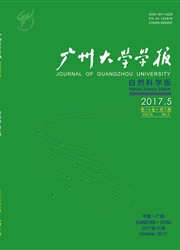

 中文摘要:
中文摘要:
根据广州市统计年鉴中的能源消费数据,分析了改革开放以来广州市产业结构的变化特征,以及2000~2010年间3次产业及其主工业行业的能源消费结构,再对碳排放量与强度进行了估算与对比分析。结果表明,2010年广州市已经迈入过渡后工业化阶段;第二产业的能源消费量和强度、碳排放量和强度都高于其它2个产业,尤其是轻工业行业的造纸及纸制品业,重工业的电力、热力生产和供应业等;第三产业和第一产业的碳排放强度也有待改善。因此提出了广州市应迫切对第二产业的内部行业进行全面深入的革新和优化,特别是轻重工业中能耗强度和碳排放强度较大的行业,同时应加快第三产业和第一产业的结构优化和技术升级,并提出促进广州向低碳城市发展的建议。
 英文摘要:
英文摘要:
Based on the Statistical Yearbook of Guangzhou’s energy consumption statistics,the paper has ana-lyzed dynamics of the industrial structure in Guangzhou since 1 978.Energy consumption from 2000 to 201 0 is explored and carbon emission is estimated for three industries and several main sectors of secondary industry. Results show that Guangzhou’development has moved into postindustrial economy.When it comes to energy consumption,energy intensity,carbon consumption or carbon intensity,secondary industry owns higher value than primary or tertiary,especially in papermaking and paper products within light industry,electricity and heat product and supply within heavy industry.However,carbon emission should be paid more attention to in both primary and tertiary industries.It is pointed out that further innovation and optimization for local secondary in-dustry is necessary.And those sectors which have higher values of energy consumption,energy intensity,car-bon consumption and carbon intensity should be more concerned about.Meanwhile,industrial structure and technology should be pressed ahead to optimize and upgrade within both primary and tertiary industries.Finally, some suggestions on urban development toward sustainability are put forward.
 同期刊论文项目
同期刊论文项目
 同项目期刊论文
同项目期刊论文
 期刊信息
期刊信息
